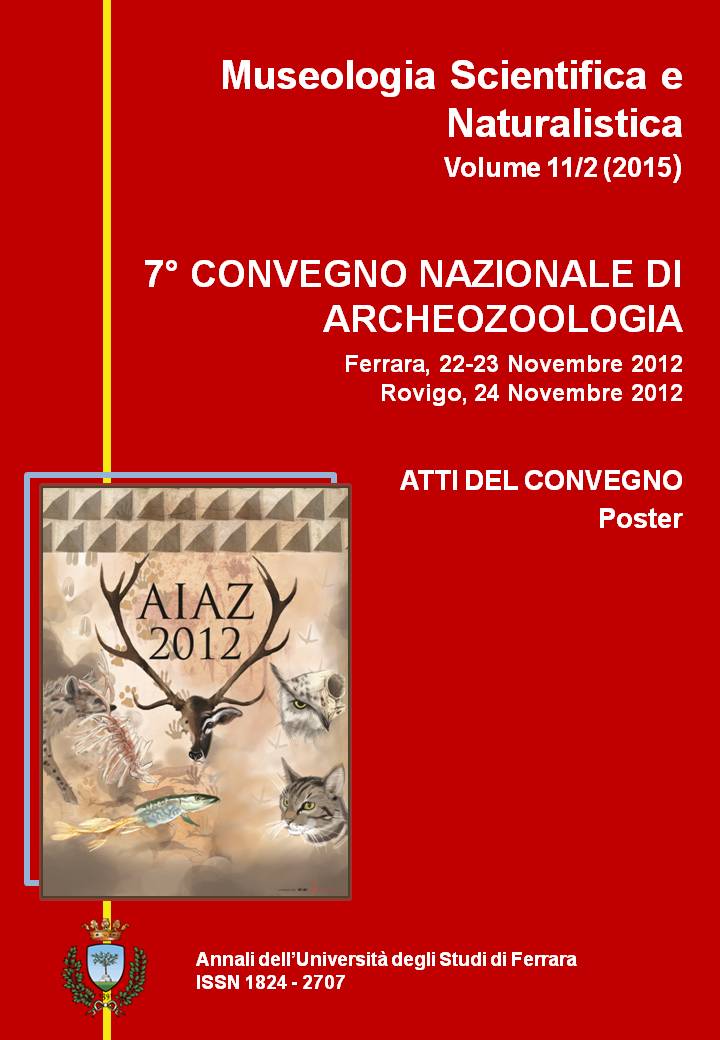Analisi tipologica e tecnologica delle "punte sbieche" in osso dalla necropoli eneolitica di Selvicciola - Ischia di Castro (VT)
DOI:
https://doi.org/10.15160/1824-2707/1040Abstract
Riassunto - Le punte sbieche o a taglio obliquo in osso sono presenti in diversi siti eneolitici italiani dell’Italia centro-settentrionale, frequentemente in contesti funerari. Solitamente sono ricavate da tibie o da metapodi di piccoli artiodattili. Ne sono state individuate diverse tipologie: si differenziano, infatti, per la scelta del supporto, per le tecniche di lavorazione, per la lunghezza dello strumento e dello sbieco e per la presenza o meno dell’epifisi. Ci sono, inoltre, sia punte utilizzate sia non utilizzate, come quelle di Casale del Dolce che sembrano avere un uso “rituale”. Il presente contributo si focalizza sulle due punte sbieche provenienti dalle sepolture delle tombe 14 e 15 della necropoli di Selvicciola, associate ad individui di sesso maschile. Queste hanno diverse dimensioni e caratteristiche e sono riferibili a due tipi diversi. L’analisi delle tracce di lavorazione ha permesso di ricostruire le varie fasi della loro realizzazione e di riconoscere l’utilizzo di strumenti metallici per il sezionamento della diafisi dell'osso su una e per la rifinitura su entrambe. Le due punte sbieche di Selvicciola differiscono, una in parte e l’altra in maniera più evidente, dal “tipo Casale del Dolce”, che risulta il più elaborato nell'insieme Eneolitico italiano.
Summary - Typological and technological analysis of the “punte sbieche” in bone from the Eneolithic necropolis of Selvicciola, Ischia di Castro (Viterbo).
The “punte sbieche” or oblique/angled points made of bone are present in several Eneolithic funerary contexts of the central-northern Italy. Usually, the points were obtained from tibiae or metapodials of small artiodactyls. Different types of points have been identified, according to the choice of the support, the processing techniques, the length and the obliqueness of the tool, and in reference to the presence/absence of the epiphysis. The angled points were found to be both used and not used, the latter being e.g. present in the burial at Casale del Dolce, thus suggesting their use in rituals. The present contribution focuses on the two “punte sbieche” found in the male burials 14 and 15 at the necropolis of La Selvicciola.The points vary considerably in size and can be attributed to two different types. The surface analysis allowed us to reconstruct the manufacturing process. It has been possible to identify the traces of metal tools used for cutting the diaphysis of the bone (in one of the specimens) and for finishing the tools (in both specimens). The two "punte sbieche" of Selvicciola substantially differ from those of Casale del Dolce. The latter are indeed the most sophisticated "punte sbieche" found in Italy during the Eneolithic.



